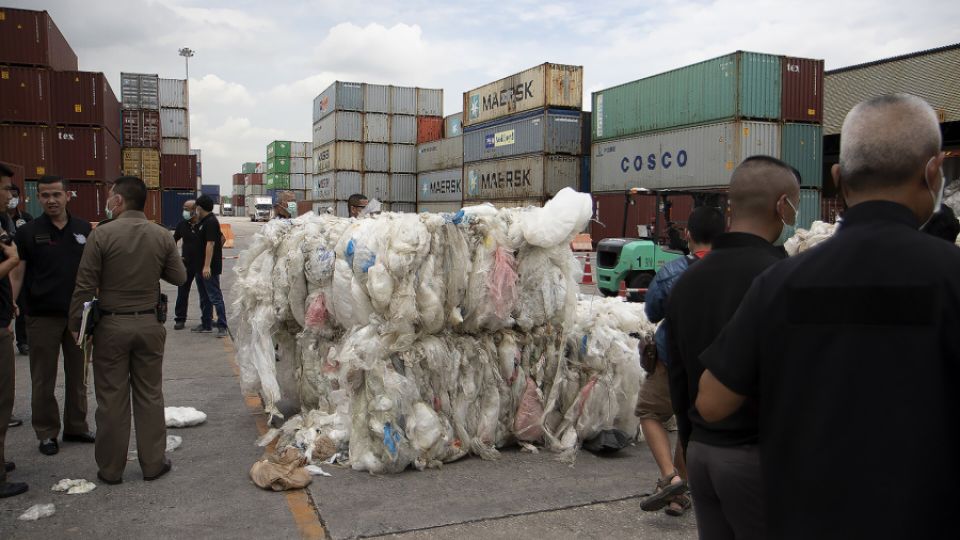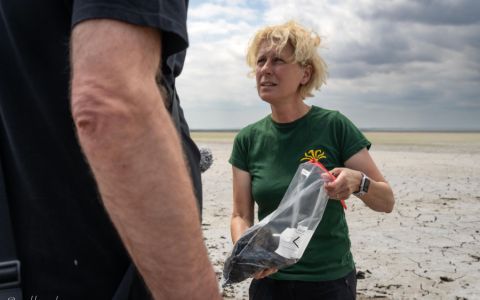15 September 2022, PRAGUE/JAKARTA/BANGKOK – The international BioDetectors conference took place in Prague on 13-14 September and was attended by experts worldwide. They can use analytical methods to measure the effect of dangerous substances’ “toxic cocktail” on human cells. Organizations from the Global South can also point out specific risks and advocate for more stringent protection of local populations from toxic pollution, thanks to cooperation with European laboratories.
In addition to experts from European research institutions, Yuyun Ismawati from the Indonesian organization Nexus3 [1] also spoke at the conference, stressing the importance of international cooperation for the protection of communities in Indonesia, Thailand, and even African countries. Punyathorn Jeungsmarn, the spokesperson of the Thai organization EARTH [2], confirmed the words. The EARTH delegation also took part in excursions to Czech research facilities. Together with Arnika, these organizations have recently secured animal samples such as fish, crabs, or eggs [3] from domestic farms near sites polluted by industrial activity or waste incineration. These were then sent to European laboratories for thorough analysis.
“We have the toxic substances, and their quantities in the samples determined using standard analytical methods, but we also send a selected proportion for the so-called DR CALUX® bioassay analysis [4], which uses human and animal cells to simulate the real toxic effect of substances on the human body. The process allows us to describe the effect of a specific combination of hazardous substances on living tissue and detect the potential presence of other chemicals, such as brominated dioxins,” says Jindřich Petrlík, Head of the Toxic Substances and Waste Programme at Arnika.
The Czech non-profit organization helps to assess the risk of industrial pollution to the health of local people in Thailand and Indonesia. In cooperation with local organizations, it regularly collects samples, which are then monitored for persistent organic pollutants [5] and, in collaboration with the Amsterdam-based BioDetection Systems laboratory, analyses their impact on living tissues. Results so far show high dioxin loads in eggs and fish around some industrial plants in Thailand, for example, near a large petrochemical plant in the Map Tha Put area or eggs from Samut Sakhon, where residual plastic from the recycling of electrical waste is burned. The results of these analyses have been used as arguments by local communities and civil society initiatives to push for rigorous monitoring of industrial emissions. These include the NGO EARTH, which has long been campaigning to introduce an integrated Pollutant Release and Transfer Register (PRTR) in the country, which Arnika is also helping with.
Through a joint project funded by the European Commission in Thailand, they support the concept of citizen science, which involves local people in mapping pollution in affected areas, for example, by educating them or involving them in sampling. EARTH also submitted a citizen’s bill for an integrated pollution register this year. “The bill requires polluters to report the type and quantity of pollutants being released from and transported out of its sources. Access to information on pollution and its sources enables authorities to assess long-term environmental effects, for private actors to regulate its activities, and for affected communities to monitor health and environmental impacts,” explains Punyathorn Jeungsmarn of EARTH, explaining the register’s concept. “This is why EARTH works with affected communities in sampling at selected sites so that we have hard data on pollution levels. Information is a valuable tool for negotiating with agencies and polluters and protecting communities,” he adds.
A project aimed at public participation in chemical safety advocacy, including establishing a pollution registry, is also being implemented with Arnica by the Indonesian organization Nexus3. As a result, findings from this country were also included in a recent global study on POPs. In the last four years, a significant increase of imported waste from the developed world ended up in landfill or burned in completely inappropriate conditions, introducing toxic substances into the food chain.
One of the sites affected by this situation is Tropodo, where waste has been used as fuel in the production of tofu. The analyses of free-range chicken eggs for dioxins exceeded the European limit by more than three folds. Ash residues from the incineration of plastics have been shown to contribute significantly to the contamination of food chains.
“Unfortunately, Indonesia’s poor waste management system is worsening by the increased plastic pollution crisis, which is caused by massive imports of waste from other countries,” says Yuyun Ismawati. “The problem is not just the volume of waste itself, but also the contamination with hazardous substances. If such waste is recycled, these often already banned substances can become a boomerang for Western countries in the form of new products. One of the studies presented at the Prague conference showed that this is also the case,” points out an Indonesian expert from the NGO Nexus3.
The Arnika Association has been drawing attention to the urgent issue of toxic pollution for a long time. Toxic substances present in waste also return to the Czech population, for example, through poor recycling or incineration. In 2018, Arnika discovered hazardous substances in children’s toys and other consumer goods that had been banned for ten years and were returning to Europe in the form of recycled plastic products from electronics.
“Studies presented by experts at the Prague conference showed, among other things, that pollution from toxic substances such as dioxins knows no boundaries and needs to be addressed more strictly by international conventions. The limits for toxic substances in waste, which are based on political rather than professional arguments, play into the hands of industry and do not protect human health, especially children’s health. This is an important message to governments from the Prague conference,” concludes Jindřich Petrlík.

Contact details:
Martin Zelinka (Arnika, Czechia): This email address is being protected from spambots. You need JavaScript enabled to view it.
Belmiro Soekarno (Nexus3, Indonesia): This email address is being protected from spambots. You need JavaScript enabled to view it.
Punyathorn Jeungsmarn (EARTH, Thailand): This email address is being protected from spambots. You need JavaScript enabled to view it.
Disclaimer: ”This press release was produced with the financial support of the European Union. Its contents are the sole responsibility of the Arnika Association, EARTH Thailand, and Nexus3 Foundation and do not necessarily reflect the views of the European Union.”
The projects “Increasing Transparency in Industrial Pollution Management through Citizen Science” and “Transparent Pollution Control In Indonesia” are supported by the Ministry of Foreign Affairs of the Czech Republic under the Transition Promotion Programme.

Notes:
[1] Nexus3 Foundation is a non-profit NGO based in Indonesia that works with all interest groups to promote protective measures for the public, especially vulnerable populations. For more information, visit their website: www.nexus3foundation.org
[2] Ecological Alert and Recovery - Thailand (EARTH) is a non-profit NGO working for social and environmental justice and sustainability in Thai society. For more information, visit their website: https://www.earththailand.org/en/
[3] Eggs are sensitive indicators of general environmental contamination, especially soil. They are also an essential food source in developing countries and rural areas in developed countries because they are cheap and highly nutritious.
[4] Bioassay or biological methods are analytical methods that allow the determination of a substance’s amount and its adverse effects on living organisms. One such method is the CALUX method, which can measure, for example, dioxins and dioxin-like substances. This method uses a modified cell line that emits a light signal when the substance of interest binds to a cell receptor. The amount of the test substance is determined by the intensity of the emitted radiation.
[5] Persistent Organic Pollutants (POPs) are substances that persist in the environment for a long time, such as dioxins, polybrominated diphenyl ethers, DDT, and perfluorinated substances PFOA and PFOS. Even in minimal doses, they can cause hormonal disorders and threaten the reproduction of all animals. Some can cause cancer, coronary heart disease, and heart attacks. They also damage the nervous system and cause ADHD and similar disorders in children. They are involved in lowering IQ







